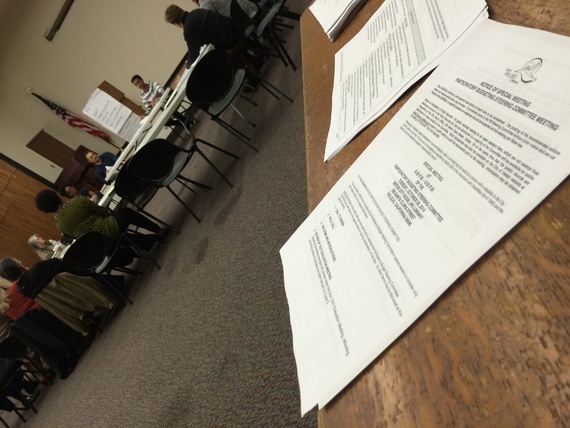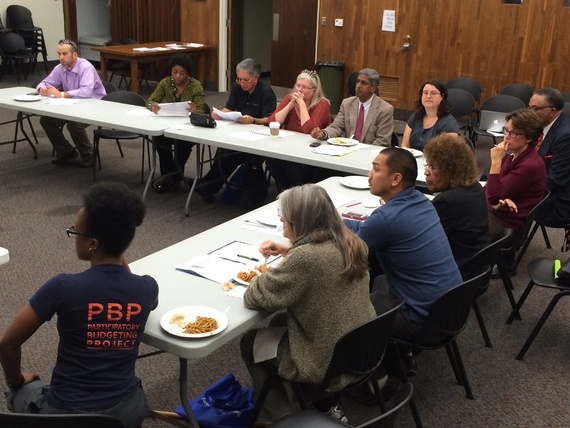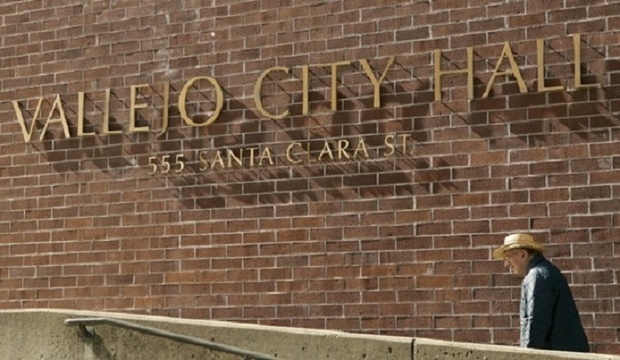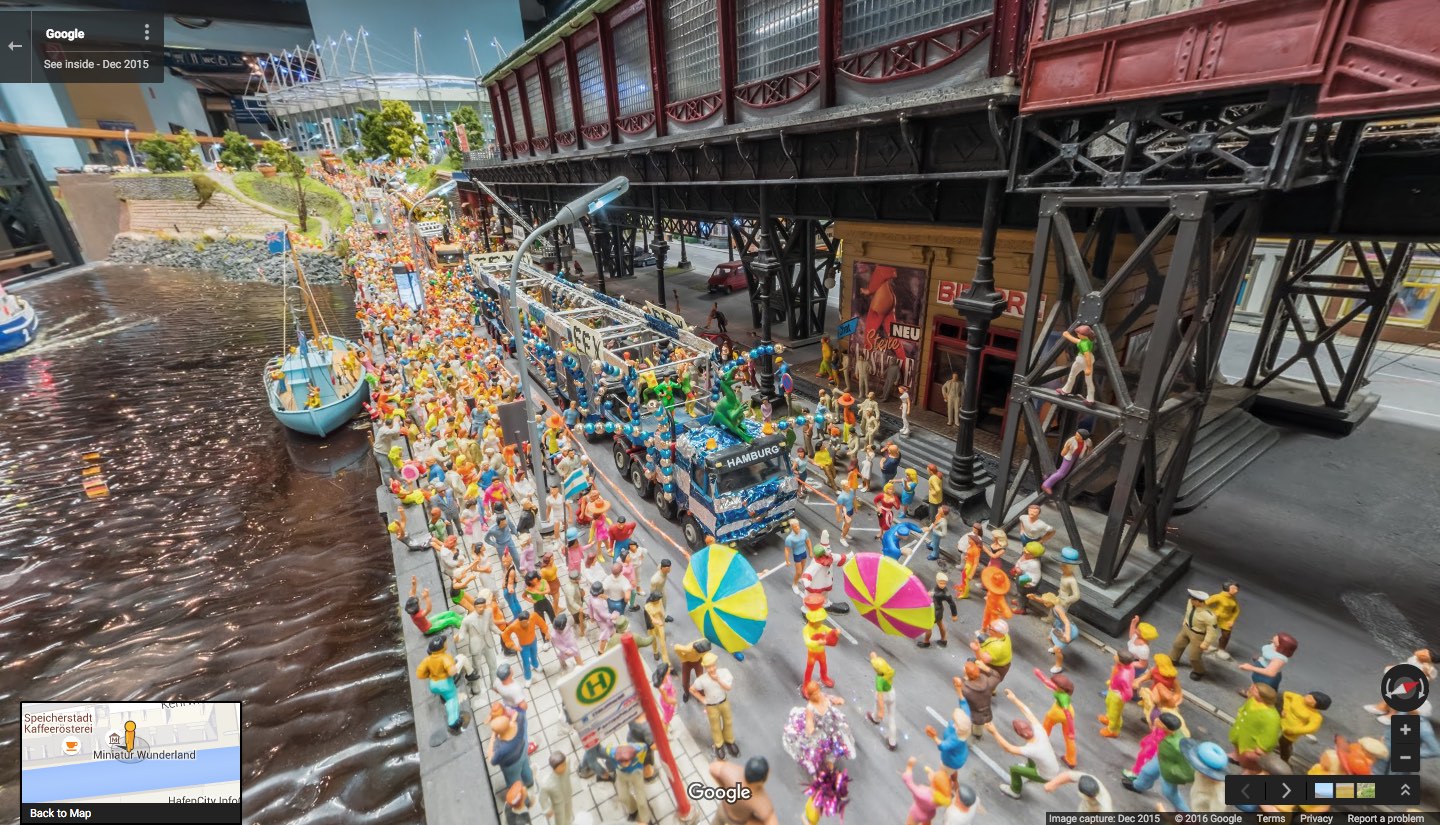Vallejo, California, residents were initially psyched to spend tax dollars on their pet projects. But things haven’t turned out as they had hoped.
This was supposed to be a happy story. A story about a town reeling from bankruptcy, violence, and crime, that brought its residents together with an innovative strategy, one that other cities across the country are trying to emulate. This was to be a story with a happy ending full of community gardens, puppy neutering, and even some repaired roads.
From our partners:
But there are few happy endings in city government these days, with spiraling pension costs, sluggish economic recovery, and Americans’ general fatigue when it comes to civic engagement. And this story is no exception.
It starts in 2011 in Vallejo, a hilly and charming town of 117,000 just a ferry ride from San Francisco. The town’s streets are dotted with pastel Victorian homes and palm trees, its waterfront has a walking path with vistas of distant yellow and green hills, and its population is one of the most diverse in the country, evenly divided among whites, blacks, Latinos, and Filipinos.
But Vallejo has struggled for years. Crippled by high pension costs and public-employee salaries, it filed for bankruptcy in 2008. Things didn’t get much better after the city emerged from Chapter 9 in 2011: Crime was bad and the city’s police department was perpetually short-staffed. There were 10 murders in 2010, 14 in 2012, and 24 in 2013.
Services had been cut to the bone: Dan Keen, the current city manager, said that when he came on board in 2012, every department was operating at staff levels lower than he’d ever seen in his career.
“The city was still shell-shocked, still reeling from the reduction in services,” he told me from his office near the waterfront.
Trying to figure out how to avoid yet another romp through bankruptcy, leaders proposed a 1 percent sales tax in 2011. Residents begrudgingly agreed–50.4 percent of the town voted to adopt the sales tax, and the proposal passed by just 159 votes. One of the opponents’ biggest concerns, voiced by Councilwoman Marti Brown, was that the new revenues would go to employee salaries and pensions, just as much of the town’s money had before, and that residents would be even more tired of Vallejo’s cycle of taxing and spending with nothing to show for it.
Then Brown had an idea.
She’d read about an experiment in Brazil where a local government allowed its residents to suggest and vote on ideas for how to spend tax dollars. The process, with the clunky name Participatory Budgeting, allowed citizens, rather than politicians, to decide how to spend infrastructure dollars. Would this be a way, she wondered, of making sure Vallejo’s money would be spent in a way its residents liked?
“I thought, there’s got to be a better way to do budgeting, there needs to be more transparency,” she said, in an interview. “It was a huge part of what helped propel Vallejo toward bankruptcy–that financial process is not a transparent process. The public doesn’t get to see it, they don’t know anything about it.”
She started talking with the Participatory Budgeting Project, a group that had formed at the World Social Forum in Brazil in 2005 in an effort to bring participatory budgeting to the U.S. With their help, Brown made Vallejo’s city council a proposal: Take a chunk of the money raised from the new sales tax, and let Vallejoans spend it how they wished, as long as the ideas they came up with benefited the public and could be implemented by the city or in collaboration with public agencies, non-profits, or religious institutions. The Project had helped Chicago adopt this type of budgeting in its 49th ward, but Brown’s idea was bigger: to do it citywide.
When Brown floated the idea, it was not universally popular. This was a city, after all, just recovering from bankruptcy, that needed every penny. The idea of letting residents do almost anything with millions of dollars rubbed some officials the wrong way.
“You are telling a city council that’s just been handed $10 million dollars—after going through years of cutbacks—you can’t decide how that money is going to be spent, “ said Keen, the city manager. “You can understand that for some elected officials, that’s pretty tough.”
But participatory budgeting had made a big difference in some cities in Brazil. In a comprehensive study, academics found that Brazilian cities that allowed citizens to decide what to do with public funds saw lower infant mortality and increased spending on services such as education and sanitation, compared to cities that did not adopt the process.
“I thought, ‘maybe I can make a difference. Maybe my voice can be heard.’”
Participatory budgeting, or PB, as the residents called it, barely passed in city council when it went up for a vote in April 2012, with Brown and her contingent winning 4-3. Some residents were furious, calling the idea that it would improve democracy “utter nonsense” in letters to the local newspaper, the Vallejo Times Herald. Even the mayor disliked the idea, telling reporters “this is not the time to fund whatever we want.” Brown suggested that this would be a way to help people have faith in their local community once again, and proposed that about one-third of the sales tax money, about $3.2 million, would be set aside for residents to control directly.
Still, many residents were curious. They started showing up at meetings, and taking on tasks: writing the “rule book,” which would govern how the process worked; attending budget assemblies, where residents brainstormed how to spend the money; and joining the steering committee, a group of 21 locals that planned meetings and reached out to locals to get them involved.
Ravi Shankar, a longtime Vallejo resident who joined the steering committee (no, not that Ravi Shankar) said that getting involved in participatory budgeting seemed like a way to put the people-first sentiments of the Occupy movement into use.
“People started coming together in extraordinary ways,” he said.
Linette Guzman, who was 17 at the time, went to one of the early meetings because her father wanted to go.
“It kind of did sound boring to me, but I felt bad and I didn’t want him to go alone; it was a Saturday morning,” she said. Then she started going back, and eventually joined a group that was vetting ideas for ways to improve the city’s parks.
Some of the 800 or so ideas suggested that first year were a little silly. There was the guy that wanted to fund a billboard that told teenagers to pull up their pants. And the guy who wanted to set up a station on Mare Island, the town’s abandoned naval base, to talk to and welcome extraterrestrials. (Neither are amusing as one idea suggested in Boston, which would have used money to make a house out of bacon, according to a Tufts professor involved in the process.) There was some controversy about funding for the city’s golf course, and whether it was egalitarian to even suggest that city monies be used for anything golf-related.
But by and large, the 33 ideas that the steering committee vetted and put on the ballot were serious. Boring, even. People proposed setting aside some money to repair potholes and fix the senior center. They wanted to spend tax dollars on lighting local parks and giving out college scholarships and small-business grants. And of course, humans being humans, there was a project to help animals, in the form of a low-cost spay-and-neuter clinic.
In May of 2013, the city held its first-ever vote on the projects that committees had short-listed. Any resident 16 or over was allowed to vote, and could choose six projects, with no more than one vote per project. The top 12 vote-getters would receive funding.
About 3,600 people turned out to vote, which is not much out of a city of 54,000 registered voters, but those who did participate were passionate.
“It was the beginning of a different type of dialogue–where our residents felt like they had much more of a say,” said Joey Lake, a Vallejo resident who was on the steering committee. “It brought people out of the woodwork who might have just sat on the sidelines.”

The top three vote-getters were all pretty practical. Slightly more than 2,000 residents voted to spend $550,000 on potholes and street repair; 1,619 chose to install light poles and decorative tree lights downtown for $170,000; 1,323 voted to improve 13 parks across the city for $621,500. Other programs that got enough votes to receive funding: science and math equipment for the schools, neighborhood clean-up, scholarships for college-bound Vallejoans, community gardens, small-business grants, 1,650 low-cost spay and neuters for local pets, improvements to a senior center, renovations to a local Boys and Girls Club, and the installation of security cameras throughout the city.
Those who did participate wielded a lot of power. The project that came in 12th, the camera project, got just 802 votes, but that authorized the city to spend $450,000 on the project. And when it came time for the city council to authorize the funding for the projects, voters showed up to make sure they had been heard. It was a contrast to the sleepy council meetings that only a few residents ever bothered to attend.
“For the first time with participatory budgeting, you had a packed room, rooting for the budget,” Keen said. “They had a stake in the budget that they had imparted.”
That first year brought a feeling of elation to people like Vilma Aquino, who had organized the effort to fund community gardens. It had been a long process that first year, at least 10 hours a week, talking to the groups that said they would be interested in running a community garden, researching how much it would cost.
But when the idea got enough votes to receive funding, Aquino said she felt like the work had paid off.
“I thought, ‘maybe I can make a difference,’” she said. “Maybe my voice can be heard.”
I talked to Aquino underneath a canopy in the pleasant green of the community garden that she is going to expand with the help of the Measure B money (the money allocated to PB). There are wooden boxes holding the tufts of carrots and hearty bushes of rosemary, rows upon rows of bright green lettuce, wooden sticks holding up thick tomato plants and eggplants.
Every week, volunteers come and harvest parts of the garden, which they bring to neighborhoods where people don’t have access to fresh fruits and vegetables. Part of the money allocated from participatory budgeting will go to a truck that will bring vegetables around town. Six gardens have sprung up, one on a corner once known for its drug issues where now brightly-painted pink and red and purple boxes hold soil and plants.

“Participatory budgeting is kind of becoming the gold standard for civic engagement,” said Alea Gage, who was hired a year into the process when the city decided it needed full-time staff to run the program.
Other cities are dipping a toe into the PB waters. Chicago and New York City both tried the program in a few districts before Vallejo, now even more cities are trying it. One district in San Francisco introduced a pilot program in 2013, Boston created a youth PB process, and St. Louis adopted the process in one ward. Cambridge, Massachusetts, and Greensboro, North Carolina, are also both in the process of implementing PB citywide.
Among Vallejoans, there is a pride in being a trailblazer, and a sense that this has brought the city good press after years of negative coverage about bankruptcy and crime. Vallejoans say there was optimism in that first year that hadn’t been present for a long time on the town’s picturesque main street, where antique shops and shuttered storefronts have slowly been turning into impromptu art galleries. As artists are priced out of Oakland and San Francisco, many are moving to Vallejo, where they’ve started art walks and steampunk events.
“Art & Participatory Budgeting is paving the path in our restoration of Vallejo! Come join in the fun!” wrote one woman, Valery Asenjo, in a listing advertising her cottage to out-of-town guests.
* * *
If the story ended here, it would be a happy one. It would be a story of a town that pulled together after a bankruptcy and restored its residents’ faith in the power of local government. A town that gave its residents $3 million to do with as they wished, and residents who chose to fix potholes and plant gardens and even fund some new programs for the homeless.
But these days, Vallejoans are fighting again. Some want to dispense with participatory budgeting entirely. Others feel that to do away with this process that has engaged so many residents would effectively squelch any pride locals have left in their city.
In its second year, the city allotted the participatory budgeting program $2 million, down from $3 million the first year. Next year, the program will be given $1 million to spend. If it still exists at all. Vallejo’s budget problems aren’t going away, and earlier this year, after the city manager recommended PB be skipped for a budget year to pay for other essential programs and services, the council decided to allocate just around $1 million a year for the foreseeable future for PB.
“It’s going to be hard for us to get people to make a commitment to stay involved when we’re looking at $1 million, and they know it’s a lot less than in the past,” said John De La Torre, the outgoing vice-chair of the steering committee, who talks with a certain sadness about the future of PB in Vallejo, almost as if he knows it won’t survive.
Some residents and city staff want it to go away entirely. After all, the city of Vallejo just balanced its budget for the first time in years. It still doesn’t have a whole lot of extra cash. The program costs about $300,000 to administer, said Keen, the city manager. That includes staff that have been hired to run the program, and other expenses incurred by holding multiple citywide meetings: free food, babysitters, and translators.
“Participatory Budgeting in Vallejo has always been nothing more than a grand experiment,” wrote resident Dennis Yen, in a letter to the editor of the local newspaper in June. “While its creators proudly boast that no other city has ever tried it on such a grand scale, the truth may be that it’s because it was never meant to be a program practiced on a citywide basis.”
Yen opposes participatory budgeting because he says that when he voted to increase the sales tax, he hadn’t been informed that it would go back to the citizens. He had thought it would be used to hire more policemen, repair the roads, and generally make Vallejo whole again. Others in town agree with him, he said.
“There are those who have been disenfranchised by the PB process,” he said. “They say, ‘Oh God, there they go, spending their tax money again.’”
Yen wants to put an item on the next participatory budgeting ballot that would give residents the option to do away with the process entirely.
“A cynical explanation is that elected officials don’t want to give up their main authority – the authority over spending.”
And the new city council, elected last year without Marti Brown (she chose not to run) seems to have a more skeptical view of participatory budgeting. In August, the council got the list of items that would go on the ballot, and rejected 15. Twenty more were sent back with revisions requested. Keen, the city manager, wonders if there should be a rule that the funds for participatory budgeting only be used on infrastructure projects–a rule that has been in place in other cities that tried the system. Allowing proposals for new services and programs gets complicated because they are often run by outside groups, and there are restrictions on how the city chooses and pays those groups, he said.
“Everyone who was running said they supported PB,” De La Torre said. But since then, other issues, like funding for police and fire, have taken priority.
It’s not exactly surprising that there would be some pushback from city leaders. After all, if you’re elected to government—or hired on staff—with the idea that it is your purview to tax and spend in what you think is the best interest of the community, any process that takes away some of that power weakens your authority—and any incentive to hold local office in the first place.
“I’m surprised that I haven’t heard of this sort of thing happening more,” said David Beasley, the communications manager for the nationwide Participatory Budgeting Project. “Elected officials can feel like they’re supposed to be governing, but they’re contradicted and their ideas or leadership are not affirmed.”
Even in the cities where PB has worked and is embraced by city leaders, there isn’t much money at stake. No American PB attempt has had the authority to spend more than $3.4 million. In Porto Alegre, Brazil, by contrast, an average of $71.5 million was allocated annually.
“People could say, ‘If it’s such a great idea, why is it only 1 percent or $1 million?’” said Peter Levine, a professor of citizenship and public affairs at Tufts University. “A cynical explanation is that elected officials don’t want to give up their main authority—the authority over spending.”
The idea that participatory budgeting could go away has enraged some Vallejo community members. A letter on a local website from September of this year that implores citizens to stop “The PB Massacre.”
There’s a petition on Change.org called “Save PB Vallejo,” which was signed by 297 supporters, and a Facebook page, “Save PB Vallejo For The Duration of Measure B,” which has 129 likes. A somewhat strange YouTube video produced by the Vallejo Independent Bulletin (“The Voice of an Unsilent Majority”) asks residents “Participatory Budgeting: Keep it Or Kill it?,” and the majority of those interviewed say they want it kept.
“Any type of movement to try to take away any power from the people—the taxpayers, people who participate, people who live in the community, any move to reduce that just doesn’t make sense to me,” one young woman, with dreadlocks and a nose ring, tells the reporter, who calls himself Chad Everyman.
Michael Carr, who was deeply involved in the process for the last nine months, wrote an angry letter to the local newspaper this week, expressing the frustrations of many. He said he was left with a “lingering impression of a city promoting its own agenda under the guise of public participation.” After all, the public already pays money for the city to fix potholes and fire trucks, yet much of the PB money was spent to take care of those tasks, letting the city off the hook, he wrote. And the city decided to spend dollars assigned for potholes and street repair to clean up toxic waste, rather than fix potholes, he said.
“The implementation has left many people more disillusioned with the political process and less convinced about government transparency,” he wrote.
Some residents are frustrated that Vallejo is getting accolades for being the first U.S. city to implement PB citywide, while at the same time actually winding it down. Some Vallejoans traveled to the White House last year to discuss their process with other cities. Brown and other early adopters speak at conferences, reporters are always seeking out Keen, the city manager, to talk about PB.
“They say they love PB, but not when it comes to signing the checks—they let us down,” said Ravi Shankar.
Reducing the amount of money allocated is “the opposite of what you’re supposed to do with PB,” said Brown. “It’s really disappointing after such a high of being the first citywide process—all that’s done is undermine people’s confidence in the process, and their confidence and trust in government.”
Another problem: Local government is time-consuming. It takes a lot of work to vet projects, make sure public money is spent properly. To guarantee everything is done fairly and transparently, there is a lot of procedure to follow. There are meetings with votes about how to hold future meetings. Homework from meetings. Meetings that consist mostly of talking about past meetings.
De La Torre said that at first, the time commitment wasn’t so bad: about three to four hours a week. But it then spiraled to 40 hours a week as the voting process approached. People showed up to meetings, but didn’t always do much else.
“Out of 20 people on the steering committee, roughly half did 95 percent of the work,” he said. “The other half did little, they might show up to meetings, did little to nothing in between.”
De La Torre is going to take a step back next year. He may attend some meetings, but needs some time off to enjoy his retirement, he said. He wonders if anyone will want to be involved with so little money at stake—$1 million, after all, is the amount of money voters chose to spend on potholes in the second year of the process. Do people really want to spend 40 hours of their free time facilitating a process to have people agree to fix potholes?
Vilma Aquino isn’t going to participate next year either. It was too much work, she said. Plus it takes a lot of time administering the community gardens as is, and she already has a job working in the garden department of Lowe’s.
In the first year of the process, 3,917 residents voted in the city’s participatory budgeting process. Voting ended for the second cycle in October, and 4 percent fewer people participated. By contrast, more than 18,000 Vallejo residents votedfor or against Measure B in 2011, which funded PB in the first place.
Ask a handful of Vallejoans on the street what they think about PB, and some haven’t heard of it. The family that runs the taco truck usually parked in the lot of a shuttered gas station, for instance. The woman who cuts hair in a salon across the street from City Hall.
Others seem cautiously supportive, but unlikely to get involved. They include Jason Martinez, 43, who was sitting with a friend at the coffee shop in the ferry terminal, watching professionals in suits board the gleaming white ferry to San Francisco. Martinez loves the idea that his town tried something “unordinary,” that they accomplished something without politicians doing it for them. But he hasn’t attended any meetings or voted on the projects.
“I got invited to go. When you’re talking about it, it sounds good,” he said. “But when it comes down to it…” he shrugged, implying that he couldn’t be bothered.
Here’s the problem with this kind of civic engagement: Spending public money is a serious business, and serious business can often be incredibly boring.
This was all too evident at the meeting I attended in late October, at which the Steering Committee talked about how the past year had worked and how the process should go forward in the future.
The meeting fell on the second-to-last night of the World Series, when the region’s beloved San Francisco Giants could have clinched the series. The meeting was, at times, one of the most boring things I’ve ever experienced. The facilitator, from the Participatory Budgeting Project, asked people to introduce themselves and say where they’d most want to be at that very moment. Very few said they actually wanted to be there.
“I want to start by talking about what a rule book is,” he said. “Does anyone know what a rule book is?” He sounded much like the dry economics teacher inFerris Bueller’s Day Off.

But the very flatness of the meeting was in itself impressive: After all, here were all these people of different ages and ethnic groups, who could be home watching their local baseball team in the World Series, who were instead talking about rules and voting procedure. And not only that, they were passionate about it.
There were some raised tempers in the room, especially about the idea that city staff were trying to take over the process. It surprised me a little: They didn’t want fewer tedious tasks, they wanted more of them, and felt empowered that they had been trusted to do them.
“It’s been staff-driven. It’s not participatory. How can you call it participatory when we’re not involved?” one man, wearing a Giants tie and with one earbud in listening to the game, protested to the man running the meeting.
Another woman, Kim Thomas, was angry about the city council’s interference.
“It’s a complete violation of the whole idea of democracy—it’s called dictatorship,” she said, and a few other people nodded their heads.
The meeting continued on into the night, with breaks for Chinese food, supplied by the city. There were nearly 20 people seated around the tables, and they stayed there for hours, breaking into small groups for discussions and then reconvening around folding tables in the fluorescent lighting of the meeting room in the basement of the library.
Across a small plaza, by contrast, the city council was holding a meeting. Eight elected officials sat on leather chairs on an elevated platform, reading a proclamation about Veterans Day and an HIV-testing program chock full of words like “whereas” and “hereby.”
That meeting began with a few dozen residents sitting in the audience, but they merely watched as the elected officials on the platform conducted their business. And then the lights dimmed and a man started a PowerPoint presentation about rebuilding Vallejo’s downtown. Those watching didn’t seem too engaged. One by one, Vallejoans snuck out. There was a baseball game on, after all.
This feature adopted from CityLab.















